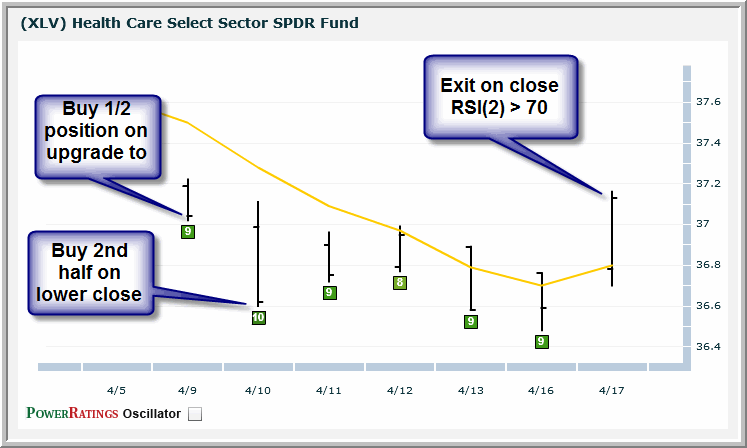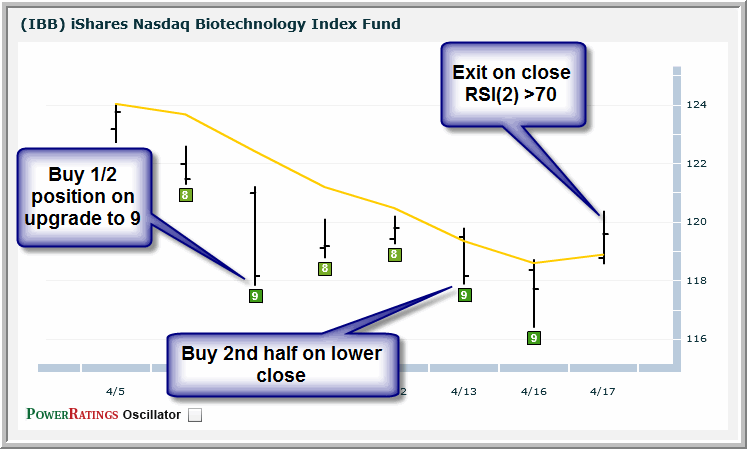Scale-in Strategies for Short Term ETF Trading
I’ve always thought that it was ironic that high probability trading strategies that are considered “aggressive” are actually in some ways quite conservative. This is especially the case when traders and investors are considering whether or not to adopt scale-in strategies to improve their ability to profitably trade exchange-traded funds.
Scaling-in means taking a position in an ETF in stages, rather than all at once. Instead of, for example, spending $5000 on a single purchase of XYZ at $20, a scaling-in strategy would look to buy only part of the position at $20, perhaps 50% of the position or less. The trader would then hope to buy additional shares as XYZ moved lower, before selling the entire position after the ETF had rallied into strength.
Trading this way, scaling-in rather than buying all at once, the active investor tends to accomplish a number of important things over time. By lowering the cost basis with a scale-in strategy, the trader tends to enjoy a boost in accuracy and winning percentage. Snapback rallies do not need to move as strongly in order for the trader with the lower cost basis to earn a profit. And in those instances when the snapback rallies are especially powerful, the biggest beneficiaries will still be those traders who bought at the lowest levels possible. That’s what scale-in strategies can help you do when trading ETFs in the short-term.
Two exchange-traded funds over the past week provided traders and active investors with the opportunity to scale-in to ETFs with significant, short-term edges and “consider buying” ratings of 9 out of 10. As you can see in the charts below – of the Health Care Select Sector SPDRS ETF (NYSE: XLV) and the iShares Nasdaq Biotechnology Index Fund ETF (NYSE: IBB) – buying half the position on the initial upgrade to 9, and then adding to the position on a lower close – in both cases, a lower close that also earned a “consider buying” 9 out of 10 rating or higher – that led to significant, short-term ETF gains.
 <=”” img=””>
<=”” img=””>
 <=”” img=””>
<=”” img=””>
This two-step scale-in strategy (scale-in strategies can have two, three, four, and even five-stage scale-ins) may be considered aggressive because it calls for buying of additional units as markets that are already at extreme levels become even more extreme. But to the extent that we know from the data that scale-in strategies tend to lower the cost basis of the average trade, typically provide greater accuracy and higher win rates, it is entirely possible that this “aggressive” approach to trading ETFs is a perfect fit for otherwise “conservative” short-term traders and active investors.
To learn more about trading exchange-traded funds with quantified edges, click here.
David Penn is Editor in Chief of TradingMarkets.com
